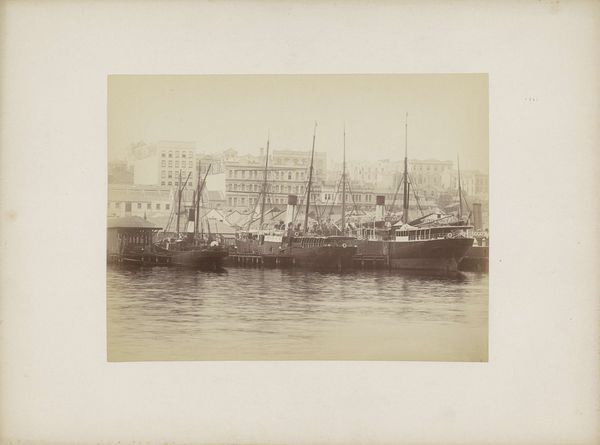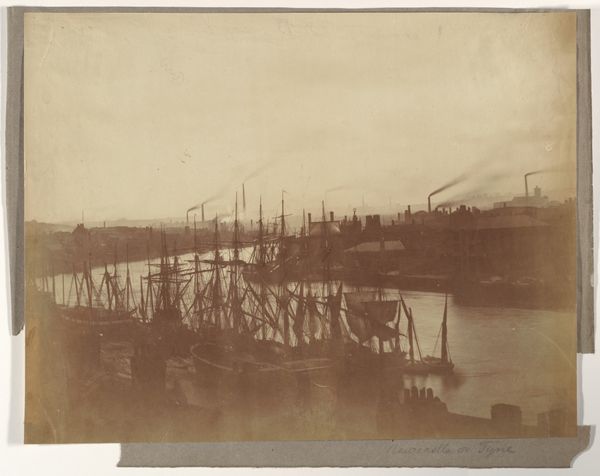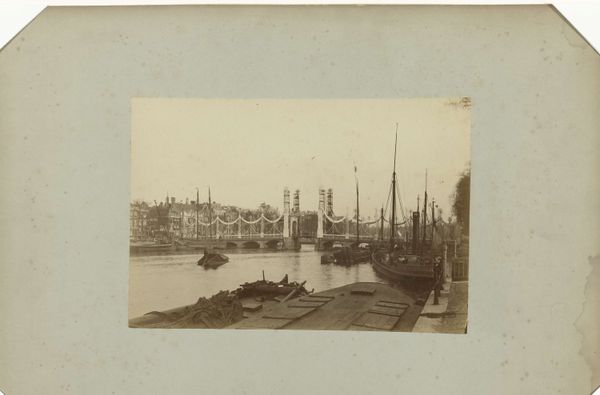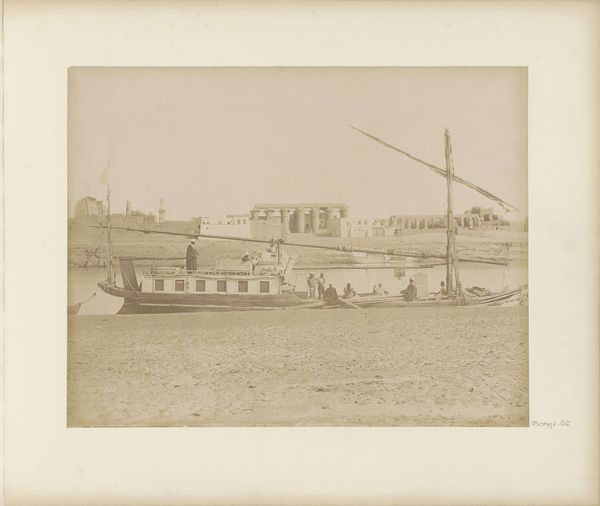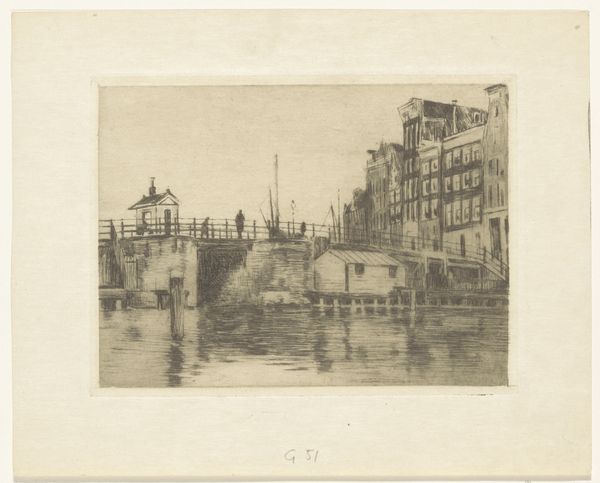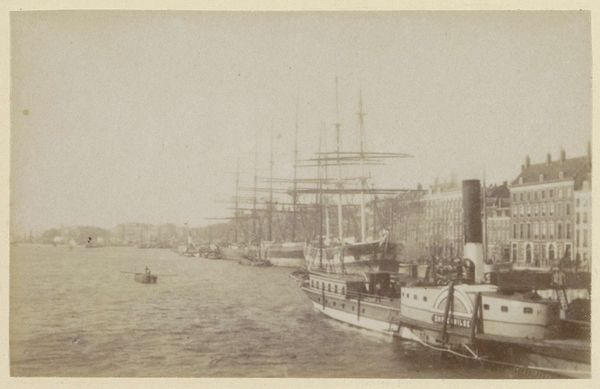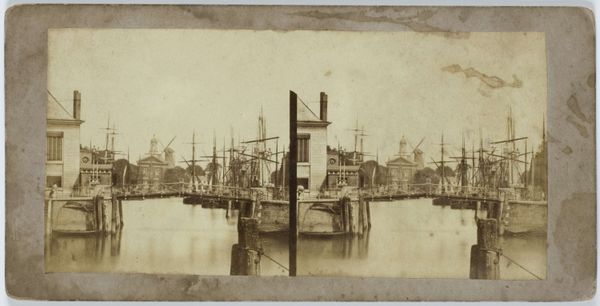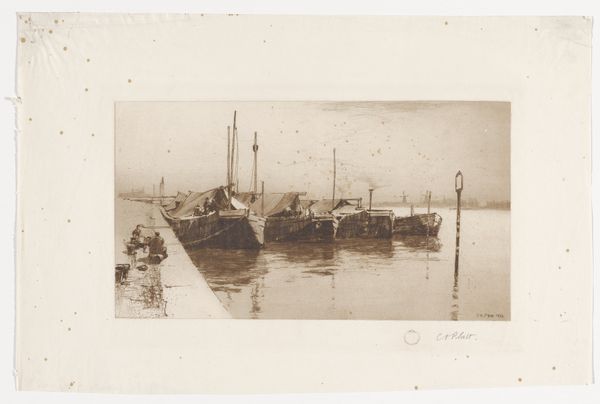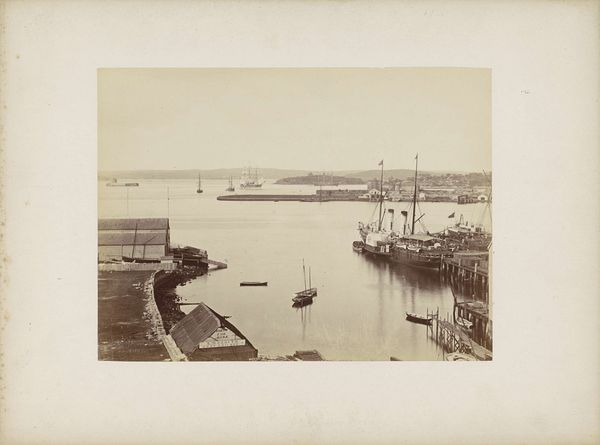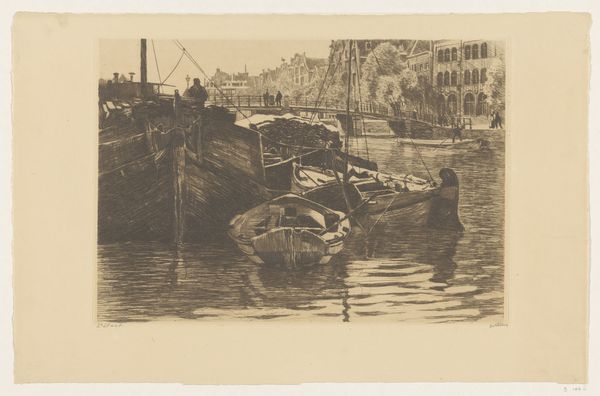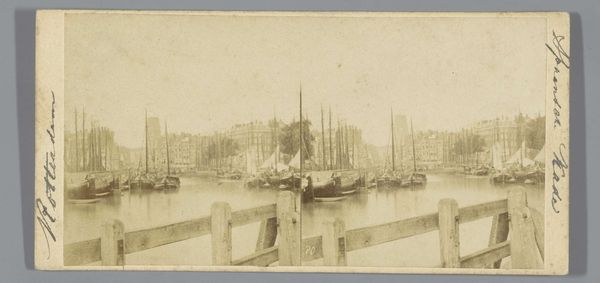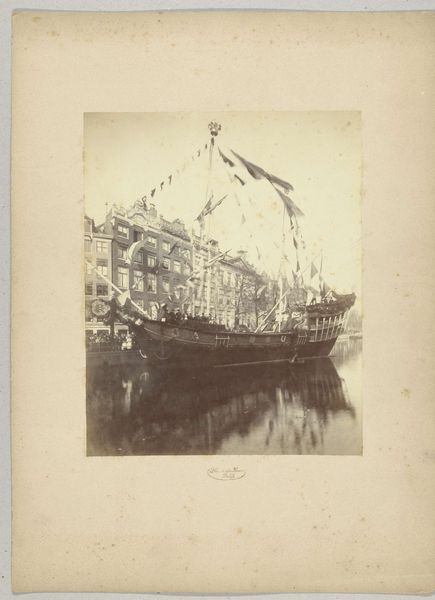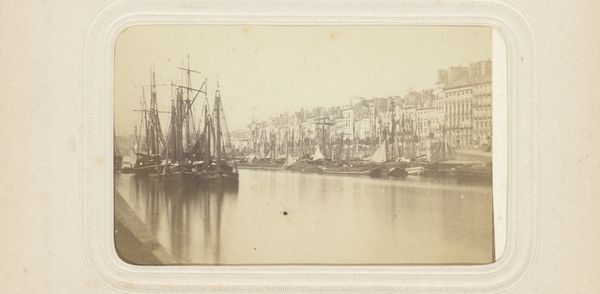
Gezicht op gebouwen, bedrijven en schepen in de haven van (vermoedelijk) Sydney c. 1890 - 1910
0:00
0:00
photography, gelatin-silver-print
#
ship
#
landscape
#
photography
#
gelatin-silver-print
#
cityscape
Dimensions: height 241 mm, width 324 mm
Copyright: Rijks Museum: Open Domain
Editor: This gelatin silver print, believed to be by Charles Bayliss and titled "View of buildings, companies and ships in the port of (presumably) Sydney", seems like it’s capturing a moment of rapid industrial growth sometime around the turn of the century. The tonal range gives it a soft, dreamlike quality, but there’s also a powerful sense of burgeoning urban life. What symbols stand out to you in this image? Curator: The prominence of the ships certainly strikes me. Notice how they dominate the foreground, acting almost as intermediaries between the viewer and the burgeoning city behind. These ships aren't just modes of transport; they're potent symbols of connection, trade, and the movement of ideas and people. In the Victorian era, maritime vessels often stood for exploration and global reach, and in this specific composition they function as vital links connecting Sydney to the world. Does that connection feel forced or does it sit in a place of meaning for you? Editor: No, that makes perfect sense. Especially because the photograph shows not just the ships, but their active presence, plumes of smoke suggest continuous labor and movement. Curator: Precisely! And what about the buildings nestled behind the ships? Look closely – is there a visual hierarchy at play? The taller buildings further back appear to stand as secular spires of the era, perhaps hinting at ambition, permanence and even a reach for the heavens in material terms rather than just the spiritual ones of ages past. The tower with the clock face is like an exclamation mark: time matters, the new religion is commerce and achievement! It is a profound displacement of values. What are your thoughts on that? Editor: I guess the scale of construction emphasizes society's self-confidence. I see these kinds of pictures in history books as visual reminders of transition, so the photographer is acting almost as a recorder, while subtly imbuing a feeling. Curator: Exactly! Photography in itself was part of this shift, capturing these immense transformations, and subtly contributing its perspective to our understanding. A picture of its own time, while being about that time. Editor: That’s fascinating! It really changes how I see the whole composition. Curator: Indeed. Recognizing these layers can offer deep insight not only into the image but also into ourselves, allowing us to engage with a crucial time capsule in the city's ongoing story.
Comments
No comments
Be the first to comment and join the conversation on the ultimate creative platform.
